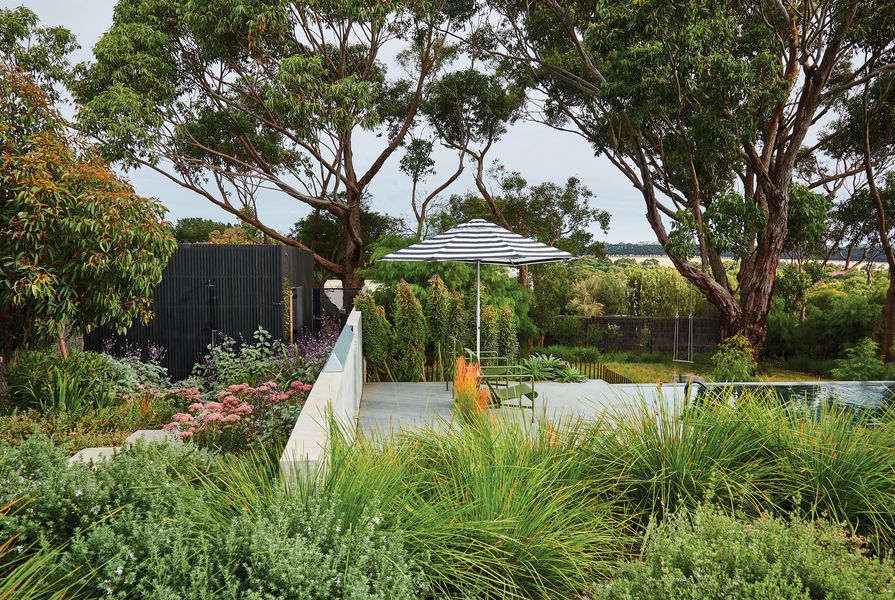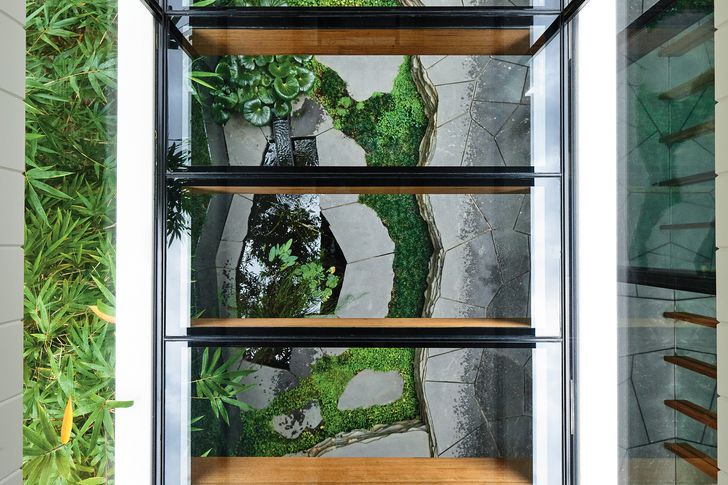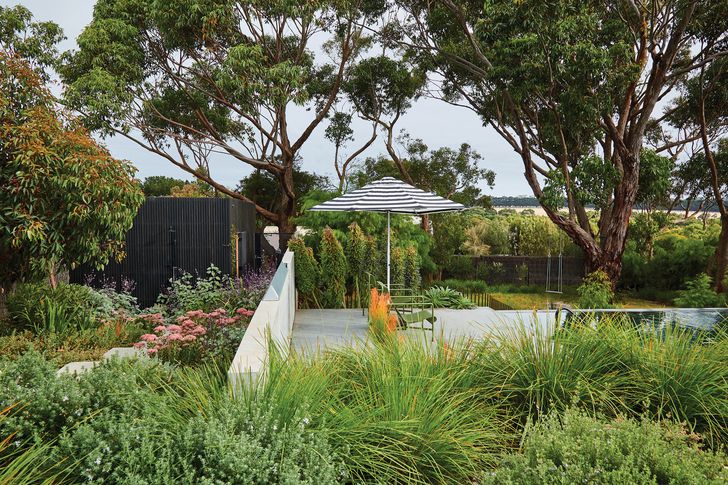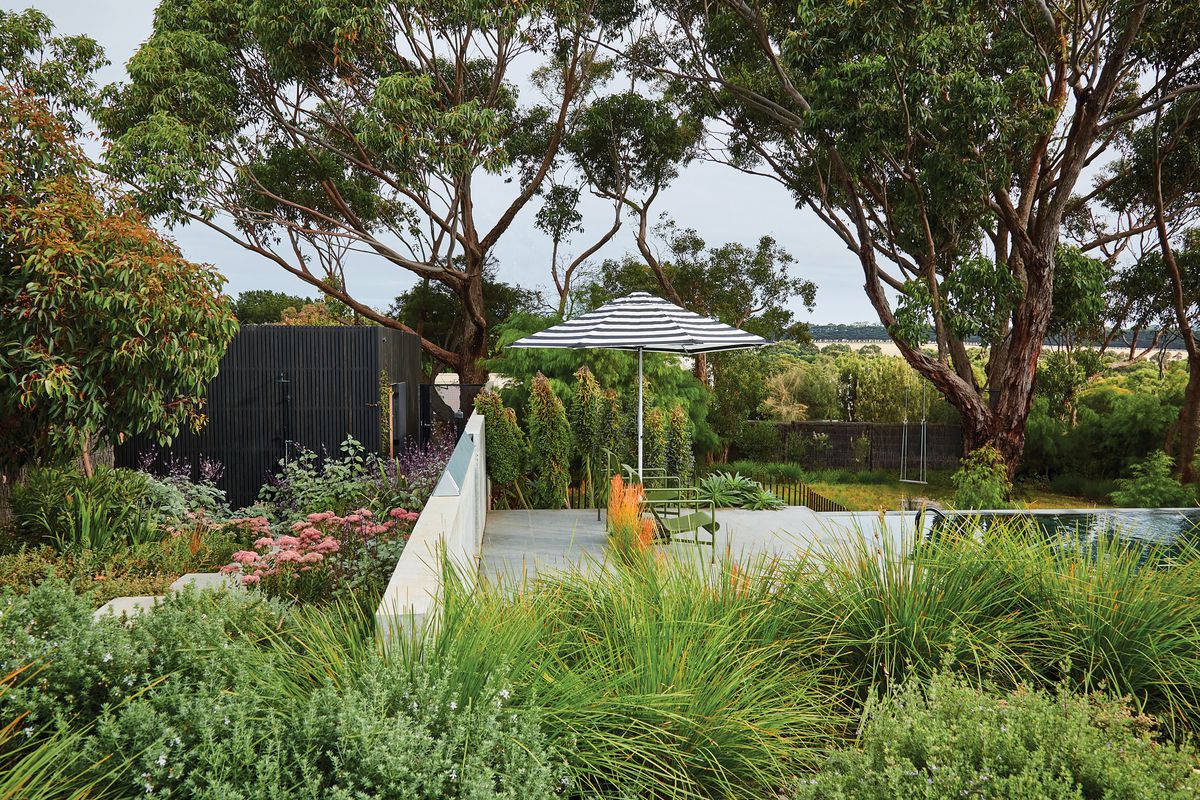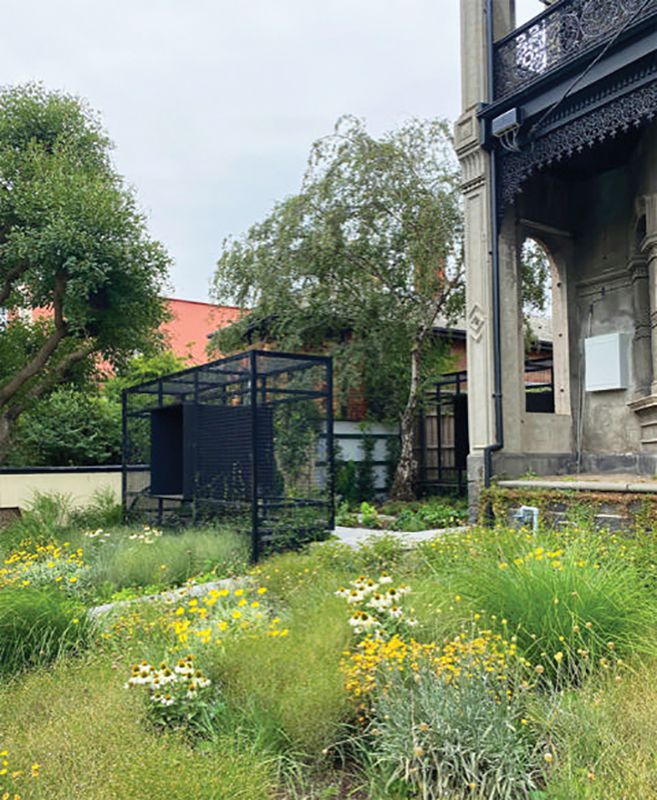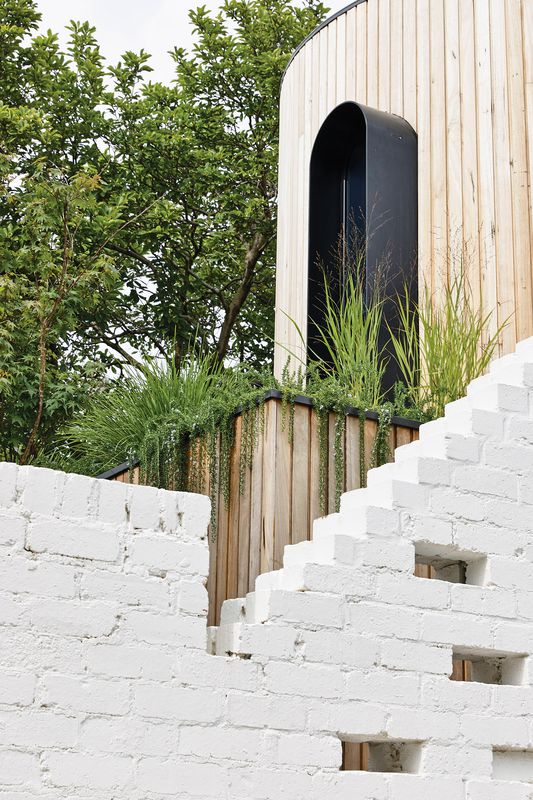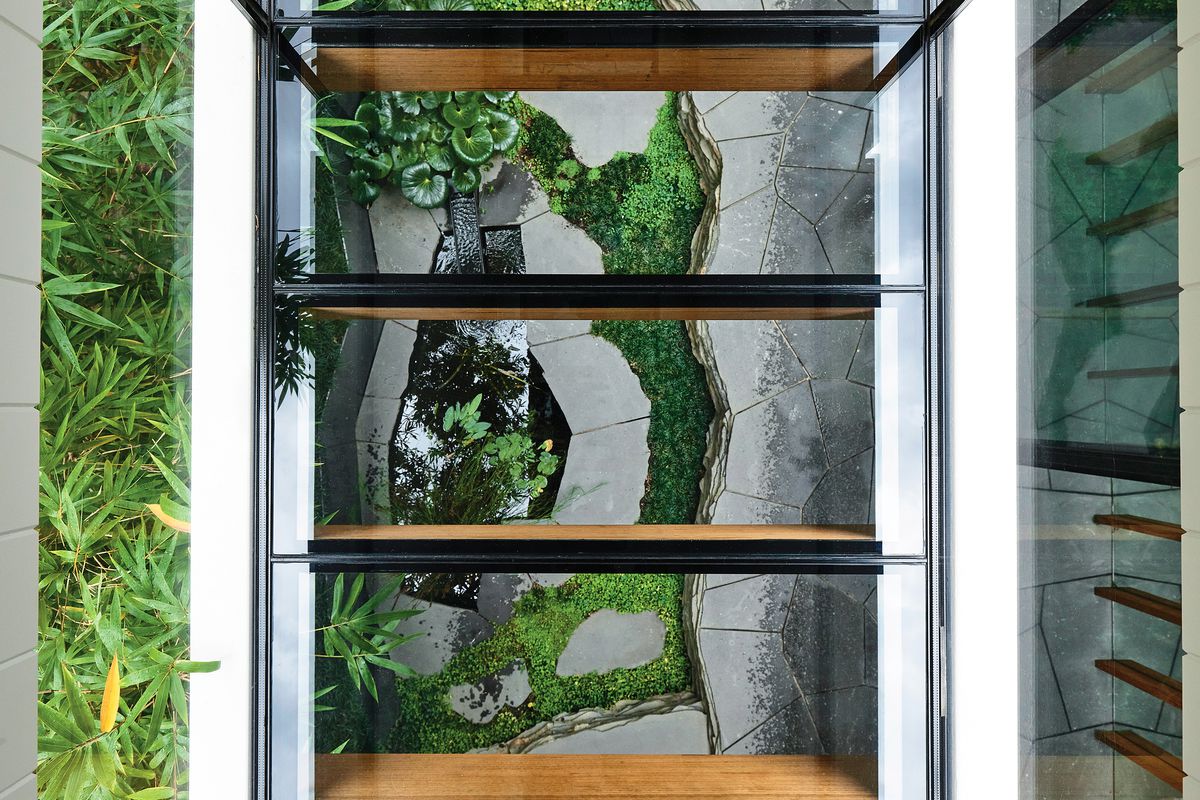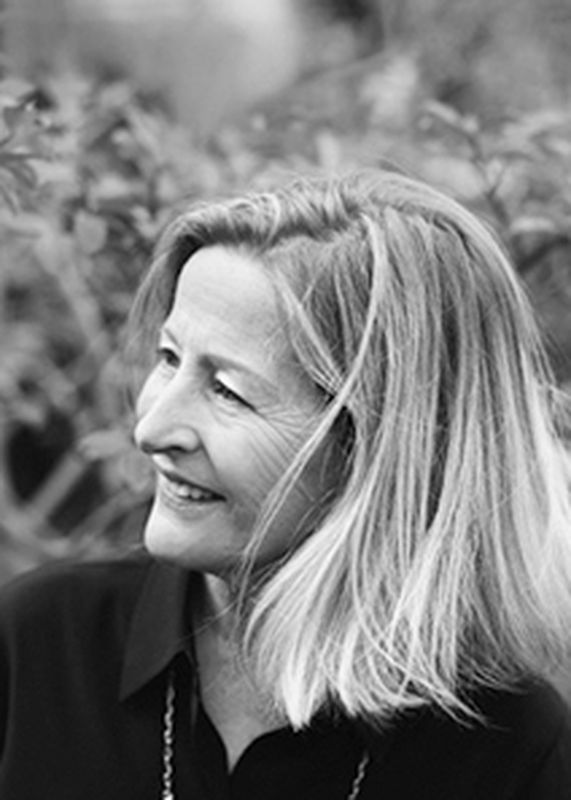Rosie Halsmith – Could you tell me about yourself, and how you came to be a landscape architect?
Robyn Barlow – I studied horticulture at the University of Melbourne’s Burnley campus. After that, I did garden maintenance and garden design. Then, I completed a couple of semesters at RMIT in landscape architecture – which I loved – before moving to New South Wales, to 200 acres of bushland along the Bega River. I continued to design gardens in rural New South Wales and worked part-time at a local nursery. Fifteen years later, I [returned to] RMIT to finish the landscape architecture course. I wanted to study landscape architecture because I wanted to broaden my outlook within landscape.
In New South Wales, I worked on quite large-scale residential projects, one being our own place, which was not connected to the grid at all. Living in the bush was great because that’s where I really learnt about biodiversity.
Robyn Barlow is a landscape architect and horticulturist based in Melbourne.
You mentioned that you studied landscape architecture to broaden your outlook. What does this broadened outlook mean to you?
To see how landscape is helpful, and to see how people can be helpful to the landscape. At RMIT, we learnt a lot about working within different scales, identifying systems and connections– I use that now, even when I’m working on a small garden. When designing with and for biodiversity, this is a big consideration.
Studying landscape architecture gave me better tools to be able to understand site. I learnt to do a lot more site analysis, to really identify the qualities of a site: how the space functions, how a client wants it to function, how the people who are living in the space respond to it and how the landscape can change that.
Glimpses of the Napier Street Garden are viewable from the adjacent laneway, creating a sense of connection with neighbouring rooftop gardens.
Image: Derek Swalwell
Looking down through a glazed bridge onto the lush groundcover and pond in Robyn Barlow’s Napier Street Garden.
Image: Derek Swalwell
How do you define biodiversity? What are your strategies for designing landscapes with high biodiversity value?
I see biodiversity as a green area where flora and fauna can cohabitate. Biodiversity also comes down to reduced waste, fewer hard materials, more permeable surfaces, veggie gardens, compost – everything that helps, in a small way, in residential spaces.
I try to reduce water usage by using plants that are suited to each site’s particular soil. I don’t always adhere strictly to a local indigenous palate, because often the client will want something different within that planting scheme – especially when it comes to plants that can attract bees, which can enhance a garden.
For me, nature is our biggest teacher in regards to biodiversity. For example, in nature, wattles will grow quite comfortably under a gum tree. Wattles can be short-lived, but then a banksia will come after a wattle and then, after that, something else that’s longer lived. There’s a succession in planting that can be learnt from nature.
Which systems you were considering and connecting to beyond the boundaries of the site at the Coastal Woodland Garden?
The Coastal Woodland Garden is very close to the sea, and there is a lot of native bushland just in front of the property. This garden connects to the broader network – particularly because it is so close to the beach foreshore. It is straddled between coastal and rural landscape. To the east, there are views to the sea, and to the west, views to green, rolling hills. I am always very mindful of the landscape outside the boundaries of site. It is important to understand the existing growing conditions.
One of the things I really wanted to do in this garden was to have native lawn. I planted Microlaena stipoides. The advantage of native grass is that there is no need for edges; the boundaries between plants and lawn are soft and undefined.
I experiment a lot with native grasses – I’ve been doing that for a long time. Native lawn is a different aesthetic to exotic lawn. A native grass is probably not going to be perfect, but it’s still usable. You don’t need fertilizer, there’s no need for poison and they don’t require as much watering.
Straddling coastal and rural landscape, Robyn Barlow Design’s Coastal Woodland Garden responds to the existing planting at the site’s boundaries.
Image: Sue Stubbs
How does your process change in the urban context – for example, in your work at the Napier Street Garden?
For an urban garden, the strategy is the same as it would be in the regional context, but it’s more confined.
Many of the gardens I work on in Melbourne are a lot smaller. In this context, I find that plants need to have multiple functions – for example, at the Napier Street Garden, the screening plant had to be very narrow, groundcovers had to withstand being walked on, et cetera. These kinds of constraints drive the plant selection.
In the urban context, I try to limit hard surfaces, I try to get a roof garden in if I can and, of course, I try to get as many plants in as possible.
The Napier Street Garden backs onto a laneway. When you’re on the roof garden, you can see that there are quite a lot of other roof gardens along the lane. Even an urban garden can be connected to a broader system.
What is the role of time – for example, adjustments to and maintenance of a garden – in the communication of biodiversity value?
Miegunya Garden is a little meadow in the front garden of a Victorian terrace house in North Fitzroy. The majority of plants used are native to the area, with a few additions of exotic bee-attracting flowers adding to the garden’s biodiversity value.
This garden is not a traditional garden for an inner-city terrace and has had mixed reviews from both client and passers-by. People seemed to either love it or hate it! Through an ongoing maintenance program and good communication, we have managed to adjust the scheme slightly to hopefully please everyone, while also retaining the same biodiversity values. As the garden matures, it has become less about the individual plants and more about the collection as a whole. It’s important to work with the client, the site and your own sense of integrity and find a balance.
The meadow planting of Miegunya Garden challenges the traditional gardens of Melbourne’s inner-city terrace houses.
Image: Matt Gibson
Do your clients comment on biodiversity value and benefits?
Yes, especially with birds and with bees – people get very excited about more bees coming to their garden.
Clients may not use the word “biodiversity” specifically, but more and more people are wanting the things that increased biodiversity offers. More clients are now asking for veggie gardens and compost, and wanting a variety of plants that include natives. I think everyone loves having birds in their gardens or a garden that provides a habitat for fauna.
With biodiversity, the garden becomes alive, instead of static. Whether it’s through spending time in a park, taking a walk in the bush or standing in a small courtyard, biodiverse landscapes make people feel happy. Now that so many people are living in cities, which are becoming more dense, and with the increasing impacts of climate change, we need these spaces more than we ever have before.
Source
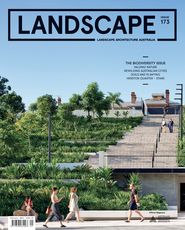
Practice
Published online: 21 Feb 2022
Words:
Rosie Halsmith
Images:
Derek Swalwell,
Matt Gibson,
Sue Stubbs
Issue
Landscape Architecture Australia, February 2022

